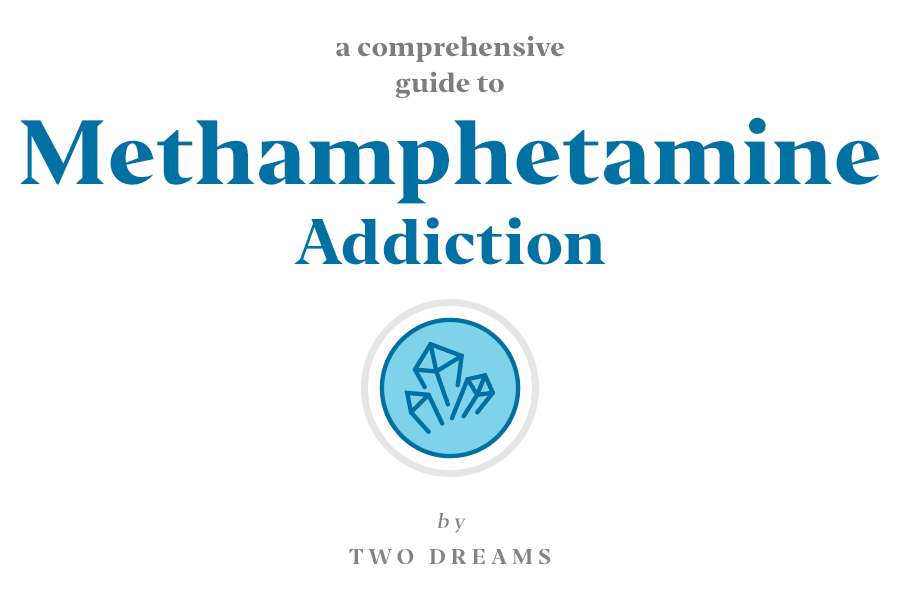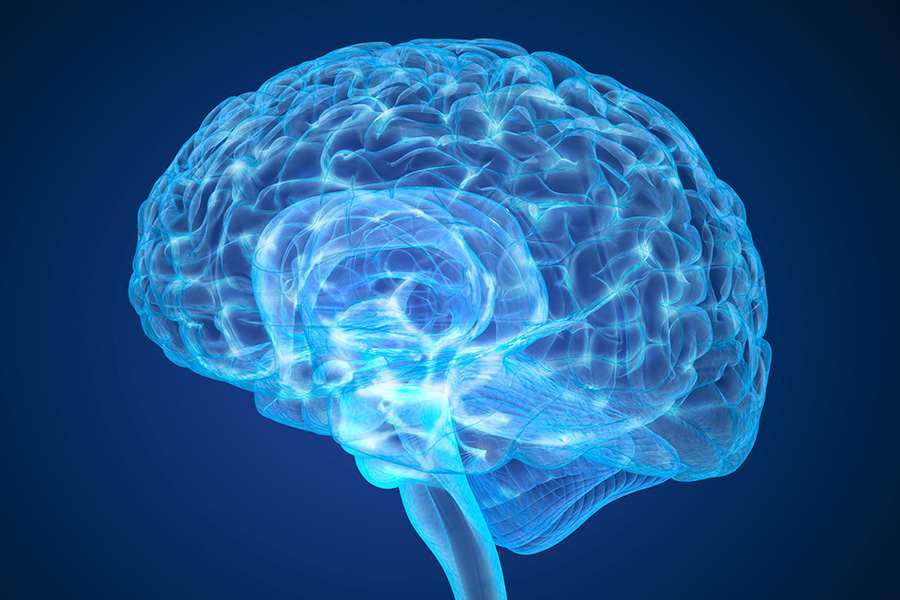
Need help with meth addiction for yourself or a loved one?
We provide the most advanced treatment in the industry. Contact us to learn more.
Meth Addiction Symptoms, Signs, and Effects
What does meth do to the body?
Methamphetamine, commonly referred to as “meth,” is a highly addictive stimulant developed from the parent drug amphetamine.
It is a white, crystalline powder that has been classified by the U.S. Drug Enforcement Administration as a Schedule II stimulant, meaning it is only legally available as a non-refillable prescription in products such as nasal decongestants and bronchial inhalers. It can contain a number of different interchangeable chemicals, so it is often referred to as a “bathtub drug.” It contains ephedrine or pseudophredrine, along with other elements such as battery acid, alcohol, ammonia, and/or other dangerous ingredients.
It typically causes euphoria, which is quickly replaced by paranoia and irritation (“a crash”). Chronic use may permanently change how the brain processes memories and emotions, causing the paranoia and irritable “crash” behavior to turn into continuous behavior.
What causes meth addiction?
Meth suppresses adrenaline production in the brain, meaning that it causes a chemical imbalance that leads to a state of extreme agitation. Users take more meth to counter the chemical imbalance and feel good again, and the
Meth creates artificial pleasure signals and, over time, the brain can no longer distinguish between the synthetic signals and natural ones. As a result, the survival instincts engrained in the brain are damaged and users rely on meth to get pleasure instead of necessities, like eating and sleeping. The brain becomes reliant on the fast pleasure signals that meth creates and the user loses the ability to experience positive impulses without drug use.

The first use creates an intense, highly pleasurable feeling that can never be recreated because the brain adapts to the drug almost instantly. Users keep taking more and more meth, hoping to recapture the initial feeling of ecstasy they experienced, but their efforts are in vain; it is impossible to change the brain back to its original, drug-naïve state, and trying only leads to dependence and addiction.
What are meth abuse and meth addiction symptoms and signs?
Physical Signs and Symptoms of Meth Abuse
- Decreased appetite
- Insomnia
- Tremors
- Convulsions
- High blood pressure/increased heart rate
Behavioral Signs and Symptoms of Meth Abuse
- Hyperactivity
- Increased talkativeness
- Mood swings
- Temporary feelings of euphoria
- Erratic or violent behavior
- Anxiety
- Paranoia
- Suicidal thoughts
The following symptoms are also common, so keep an eye out for…
- Track/needle marks on arms, legs, hands, feet, or neck
- Hallucinations
- Skin abscesses or inffections
- Anger/irritability/hostility/aggressiveness
- Paranoia
- Excessive coughing or hoarse voice
- Euphoric state followed by fatigue or depression
- Respiratory problems, sinus infections, lung infections
What are some meth abuse and meth addiction effects?
Potential long-term effects may include
- Anhedonia
- Dental problems (cracked teeth, tooth/gum decay, gum disease)
- Hallucinations (visual and auditory)
- Body sores or infections
- Memory loss
- Permanent aggressive or violent behaviors
- Mood swings
- Delusions, especially bugs crawling under the skin
- Psychotic tendencies
- Weight loss, emaciation
- Stroke
- Coma
- Brain damage (similar to Alzheimer’s disease or Parkinson’s disease)
- Neurological disorder causing repetitive motor activity
- Death
Can anyone become addicted to meth?
Yes, meth is a highly addictive substance that has the ability to affect everyone.
Addiction is not caused by a single factor, but rather a multitude of factors. It is considered to be hereditary, in the sense that people who have a first-degree relative with an addiction are more likely to develop an addiction than those who don’t. However, many addicts have no family history of addiction, so the role of genetics alone is inconclusive. Environmental factors play a significant role, and those exposed to family and friends using meth on a regular basis are more likely to try it than those individuals who would have to go out of their way to gain access to the drug. Peer pressure, low socioeconomic status, and lack of parental guidance are also contributing factors to meth addiction.
Meth Withdrawal
What are the causes of meth withdrawal?
Withdrawal refers to both the physical and emotional consequences of either suddenly ceasing to take or drastically reducing intake of the drug after dependence on the substance is established. The brain and body become accustomed to functioning under certain conditions with meth, so forcing them to quickly adapt to new ones can cause a wide array of issues.

Signs of meth addiction withdrawal
Physical and mental signs of meth withdrawal
- Strong cravings
- Headaches
- Irritability
- Agitation
- Extreme drowsiness
- Restlessness
- Vivid dreams
- Anxiety
- Depression
- Hunger
- Fatigue
- Suicidal ideation and behaviors
What happens during meth withdrawal?
The effects of meth withdrawal vary from person to person. Withdrawal symptoms may last anywhere from days to weeks depending on how much and how often the user was using. Many users report that withdrawal is incredibly intense and intolerable, so we encourage you to seek professional help and/or detoxification services before attempting to quit.
How does Two Dreams handle meth detox?
We do not personally offer detoxification services, however our professional staff is more than happy to refer patients to nearby clinics for detox before admission into our program.
Meth Overdose
Meth Overdose: The Risks and Effects
Ingesting a highly potent dose or large amount of meth, either intentionally or accidentally, can lead to serious consequences, including overdose, coma, and/or death. This guide is for information purposes only and should not be used in case of an emergency.
If you suspect you or someone else has overdosed, call your local emergency hotline (ex. 911) or a poison control center (1-800-222-1222) immediately.

Signs of meth overdose
- Rapid respiration rate
- Profuse sweating
- Dilated pupils
- Tachycardia
- Confusion
- Delirium
- Hyperthermia
- Hyperactivity
- Kidney failure
- Multiple organ failure
- Intracerebral hemorrhage
- Heart attack
- Stroke
- Coma Death
What to do if someone is overdosing on meth
If you suspect you or someone else has overdosed, call your local emergency hotline (ex. 911) or a poison control center (1-800-222-1222) immediately, as overdose can lead to widespread organ injury and/or death if not handled quickly. It is helpful to know the strength of the ingested drug, as well as the time it was taken, the amount taken, and whether or not it was prescribed. The operator will also likely ask for the person’s age, weight, and current condition.
Meth Addiction Treatment: What To Do Next
What are my next steps?
Please call us here at Two Dreams if you find yourself struggling with methamphetamine use; our lines are open 24 hours a day, seven days a week.
Two Dreams offers a safe, judgment-free place to start the healing process. There are many different ways to start managing meth addiction and meth addiction treatment, and we understand that what works for one person may not necessarily work for another. We provide inpatient, intensive outpatient, and outpatient services based on the unique needs of each individual and the level of care needed. Our trained counselors, under the supervision of a physician, are happy to talk through these options with you and help decide which placement will best fit your needs.
We ensure that the transitions into and out of meth addiction treatment are as stress-free as possible by guiding you through each process step-by-step. Additionally, we provide step-down transition programs to help you shift out of the treatment center setting.
Our expert staff has been helping people with addiction for decades, so you can be sure that you and your loved ones will be in good hands. Dr. Andrea Barthwell, founder and CEO of Two Dreams, is widely regarded as one of the “Best Doctors in America” in the field of addiction medicine. She served as president of the American Addiction Society of Medicine (ASAM), as well as Deputy Director for Demand Reduction in the White House under President George W. Bush. Her renowned status and experience in the field have allowed her to shape Two Dreams into the outstanding recovery center that it is today—one that is able to provide state-of-the-art care and services to those in need.
We are here to help you in any way that we can; we are on your side.
Education Resources/Sources Cited
- https://www.addictions.com/meth/
- http://chemistry.about.com/od/medicalhealth/a/crystalmeth.htm
- http://www.methproject.org/
- https://www.drugabuse.gov/publications/drugfacts/methamphetamine
- http://www.reboundbehavioralhealth.com/addiction/meth/effects-symptoms-causes
- http://www.michaelshouse.com/crystal-meth-rehab/why-is-meth-so-addictive/
- http://www.pbs.org/wgbh/pages/frontline/meth/body/
- http://www.narconon.org/drug-abuse/signs-symptoms-meth-use.html
- http://drugabuse.com/library/crystal-meth-abuse/
- https://www.drugabuse.gov/drugs-abuse/methamphetamine
- https://medlineplus.gov/methamphetamine.html
- https://teens.drugabuse.gov/drug-facts/methamphetamine-meth
- http://www.pbs.org/wgbh/pages/frontline/meth/faqs/
- https://www.whitehouse.gov/ondcp/meth-nps
- http://abovetheinfluence.com/drugs/meth/
- http://www.new-hope-recovery.com/center/2014/10/17/meth-ingredients-toxic-chemicals-used-in-making-crystal-meth-2/
- http://luxury.rehabs.com/crystal-meth-addiction/
- http://www.narconon.org/drug-information/methamphetamine-meth.html
- https://erowid.org/chemicals/meth/meth.shtml
How We Treat Meth Addiction at Two Dreams
What makes our meth addiction treatment plans effective?
Our unique 3-7-3 model allows for each patient to explore their own recovery while simultaneously healing alongside their peers.
Our Unique Treatment Model
Three Phases
The first “3” refers to our three phases of treatment: coming in, looking in, and looking out. In brief, the Coming In phase is about making the decision to come into the treatment center and learning to trust and tell your story. The Looking In phase is devoted to introspection, acknowledging the addiction, committing to recovery, and reducing or eliminating inducements to use. The Looking Out phase revolves around planning for life outside the treatment center, in terms of managing cravings, relationships, living arrangements, etc.
Seven Dimensions
The “7” refers to the seven dimensions of treatment we feel comprise a holistic treatment experience. In focusing on these aspects of life, we believe we can help our patients to become fully well rounded, self-sufficient individuals.
- Abstinence
- Peer Support
- Professional Guidance
- Medication Review
- Nutrition
- Exercise
- Ritual (12-Step Component)
Three Outcomes
The last “3” refers to the three outcomes we aspire to achieve in treatment: mental peace, physical well-being, and personal productivity. In achieving mental peace, patients can cast off the negative emotions fostered by addiction and replace them with feelings of self-worth, positivity, and hope for the future. In achieving physical well-being, patients embrace the mind-body connection and live the healthy lifestyle necessary for fostering a healthy mindset. In achieving personal productivity, patients play to their strengths and contribute to society in their own way while continuing their recovery journey.
Learn more about our unique program, or watch a short introduction video from our founder, Dr. Andrea Barthwell.
What will you experience during meth addiction treatment at Two Dreams?
Our unique program combines the 12-step modality with behavioral therapies, motivational enhancement therapy, psychiatric care, and other psychosocial methods. We fully embrace the 12-steps as an important part of recovery support, but also realize that it can be most beneficial when used in conjunction with other modalities.
The treatment experience at Two Dreams also involves daily process group therapy sessions, individual counseling sessions, physical activities, nutritional guidance, journaling and mindfulness exercises, recreational experiences, and more. We believe that addiction is best addressed holistically and we take pride in our ability to instill in you the tools needed to achieve mental peace, physical wellbeing, and personal productivity.

Daily Ritual at Two Dreams
Ritual is a key component of beating addiction; by ritualizing your daily schedule, you can largely remove the irrational, emotional risk-taking behaviors that oftentimes lead to relapse. We help patients to develop their own rituals by turning them on to some of our own evidence-based habits for success. For example, every morning patients wake up and take a walk on the beach, bathing their eyes in sunlight to encourage the switch from GABA to glutamate, AKA sleep to wake. They then enjoy a 4 oz. fruit and vegetable smoothie after that to start their metabolism and further encourage wakefulness.
The Two Dreams Advantage
We have a maximum of 10 patients at any given time, so we are able to continually update and evaluate each patient’s progress in an effort to maximize their outcomes. We aim for overall wellness, as opposed to just detoxification and abstinence, so when patients leave our beautiful beachside location they are ready to take on the challenges of everyday life.